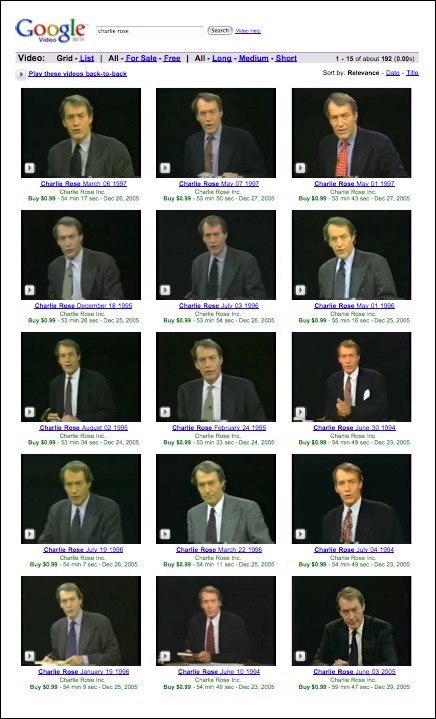There have been two interesting developments in the world of brand-names here in Canada recently, both of which have been very public and somewhat confusing.
The first one is most obvious, as I can’t imagine there’s a television-watching Canadian who doesn’t know that “Cottonelle is changing its name to Cashmere.” For those of you from outside of Canada, Cottonelle is the brand name used by Scott Paper Limited here in Canada for “Canada’s #1 selling bathroom tissue.”
You, like I, may have wondered why Scott Paper, after years of drumming us over the head with the “you can feel the cottony softness… Cottonelle” television commercials, would change horses in mid-stream. It turns out that the change is the result of a complicated set of corporate maneuverings:
- Scott Paper Company, a U.S. company, was founded in 1879 in Philadelphia (reference).
- Westminster Paper Mills, a Canadian company, was founded in 1922 in British Columbia (reference).
- In 1954, Scott Paper Company acquired a 50.1% controlling interest in Westminster Paper Mills (reference). The relationship allowed Westminster Paper Mills to use its new parent company’s brand names in Canada.
- Westminster Paper Mills changed its name to Scott Paper Limited in 1964 (reference).
- The brand-name Cottonelle was introduced by Scott Paper Company in the U.S. in 1972, and sometime thereafter was used by Scott Paper Limited to market toilet paper in Canada.
- In 1997, multinational giant Kimberly-Clark acquired Scott Paper Company (reference) and, with the acquisition, controlling interest in the Canadian Scott Paper Limited.
- Partly due to concerns from Canada’s Competition Bureau, in 1997 Kimberly-Clark sold its interest in Scott Paper Limited to the Canada-based Kruger Company.
- As part of the sale, Scott Paper Limited was given a 10-year license to use certain Kimberly-Clark brands, like Cottonelle, in Canada.
- With the brand licensing agreement soon to expire, in 2004, Scott Paper Limited began the brand transition from Cottonelle to Cashmere (reference).
And so we now wipe with Cashmere, not Cottonelle.
Slightly more dramatic is the situation with Radio Shack, which sort of split into two:
- Radio Shack was founded in 1921 in Boston (reference).
- In 1963, Radio Shack was acquired by the Tandy Corporation and in 1968 Tandy opened the first Radio Shack stores in Canada (reference).
- Tandy Corporation spun off its foreign operations into a company called InterTan in 1986.
- InterTan spun off its UK operations in 1999 and Australian businesses in 2001 (reference), leaving it with operations in Canada.
- In 2004, InterTan was acquired by Circuit City Stores Inc., a U.S. electronics retailer.
- The same week, Radio Shack launched a law suit against InterTan, alleging that InterTan had breached the terms of its brand license agreement.
- In 2005, Radio Shack won its case, when a Texas judge ordered InterTan to stop using the Radio Shack brand name.
- Circuit City subsquently announced that it would re-brand its 900 Canadian Radio Shack stores to The Source by Circuit City.
- The following week, Radio Shack announced that it would be forming a Canadian subsidiary to oversee its expansion into Canada, using the Radio Shack brand name.
The result is that we now have two separate and distinct electronics retailers in Canada: Radio Shack, owned by U.S.-based Radio Shack Corporation through a Canadian subsidiary, and The Source by Circuit City, owned by U.S.-based Circuit City.
If you live in Charlottetown you may have been confused that the Confederation Court Mall location of Radio Shack got re-branded in the middle of last summer while the Charlottetown Mall location has retained its Radio Shack branding. This is about the change: apparently the Radio Shack sign is coming down tonight, and if you visit tomorrow morning you’ll be shopping at The Source by Circuit City.
At Christmas time, however, my Dad was shopping at the Radio Shack in Burlington, Ontario and noticed that it was still a Radio Shack. He asked the store for information and was told that the store was, in fact, one of the new Radio Shack-controlled stores. A call to the store tonight confirms that the Burlington location was the first of the new crop to open, in November of 2005, and that there are currently 9 locations open in Canada.
Research assistance for this post from Betty Jeffery, University of Prince Edward Island, through the isle@ask program.
Browsing Google Earth using reporter Declan Butler’s excellent avian flu map layer, I found a report that hit close to home: on October 19, 2005, 35 swans were found dead of H5N1 in Viroviticko-Podravska County, Croatia (according to this FAO report). That’s about 35 miles from the area of Croatia where my relatives live in Disnik. Fortunately there have been no reports of human to human (or even bird to human) transmission in Croatia to this point.

The World Health Organization has an RSS feed for Disease Outbreak News. Right now you’ll find a lot of information about the avian influenza situation in Turkey. The same information is available on a companion web page.
Last week I made the mistake of watching Black Dawn: The Next Pandemic, a fifth estate special on CBC Television. This is a “fact-based docu-drama” that takes the viewer through a fictional avian influenza pandemic as it spreads around the world. The essential message of the special was “there’s very little you can do except wash your hands, and you have a pretty good chance of dying anyway.” I can only assume that their goal was to shake us out of complacency; on that level, they did their job.
Unfortunately they dropped the ball on the “steps you can take to mitigate the problem” end of things, leaving we viewers to simply cower in fear. They did prepare a Answers to Questions page that is somewhat helpful, but the program itself could have used a companion hour with practical advice: show us the best way to wash our hands, for example. Run through a checklist of good items to have around the house. Offer suggestions for doing things like shopping during a pandemic.
If the pandemic is, as the special suggests, inevitable, it would seem a prudent use of broadcast time to concentrate on offering useful, practical advice now instead of waiting until it’s too late and we’re all wrapped up in panic.
It’s been four days since the CBC News updated its visual and sonic identity (details). And I must say that I absolutely love the changes: the typography is clean, crisp and bold, the sonic pageantry is dialed way back, the “graphics for graphics sake” quotient is greatly reduced, and everything seems to have an extra spring in its step.
I even like the new Compass introduction: short, to the point, and great looking.
Favourite change: the [too] subtle “when the item we’re promoting now is coming up” analog clock they used during The National has been replaced with an actual count of the minutes until said item airs: much more useful.
Directional change: Boomer now appears on the other side of Bruce on Compass (I like the new weather graphics too).
Subtlest change: all the Compass reporters got new socks for the ends of their microphones.
I’ve heard lots of grumbling about the CBC “wasting lots of money on stupid design changes when things were perfectly good before.” But I don’t agree: design matters, and I laud any organization that invests in it; good design lets CBC News communicate more effectively, and that makes everything they do more valuable.
Google Earth for the Mac was released today. I’ve just downloaded it, and I’ve been playing with it for half an hour. It’s truly an amazing product: so much more than Google Maps, and something that has the potential to change how we think about the earth.
I thought the whole “flying around” animated thing was a gimmick, but it’s not: it works to reinforce that the world isn’t a discrete collection of maps sheets, but rather an interconnected whole upon which we’re all scattered. That might sound like a lofty idea, but I think it’s a powerful one, and something that will affect our view of the planet as much the pictures of earth from the moon did back in the 1960s.
If you haven’t experienced Google Earth yet, I recommend you grab a copy: it’s a small download, it’s free, and it may blow your mind.
Let this be a lesson to me: never blog about being sick, especially when the closing words of the post are “the end is near” (meaning the end of the sickness, not of me).
After blogging about said sickness, I returned to almost full health for a couple of days. I cleaned the bathroom, got a lot of work done, and even took the small family to Brookvale for an afternoon of cross-country skiing.
My hubris got the better of me, however, come Monday morning when the cold returned in a new a meaner form, settling in the upper reaches of my head and making me feel like my brain had turned to cotton. And the mucus, oh the mucus — my nose has been running a tap all week.
I’m back in the office this afternoon, as I’m feeling more like my head is full of dandelions than cotton (a distinct improvement), and there’s work to be done. I’m bolstered by a bracing cup of the Ginger Black Tea from Interlude. But I know enough not to tempt fate this time around, and I’m going to be home before Compass is over.
The crazy thing about all of this is that the usual vector for sickness into our family is Oliver, but he’s been the picture of health since Christmas. Catherine too. Here’s hoping they stay that way.
In the meantime, if you happen to join me in my stuffy-headed misery, buy lots and lots of Kleenex. You’ll need it.
You can now buy old episodes of the Charlie Rose show from Google Video for 99 cents each (compared to DVD copies of episodes that cost $34.95). It seems that some episodes — like this one — are available for free download. Here’s a screen shot of a Google Video search for “Charlie Rose”:

So now it’s officially the “cbc news at six.” Ironically I missed the first episode because our DVR was set to record a program titled “Canada Now.” And there wasn’t one. So I watched it on the web. Where I was delighted to find that the web address for the RealVideo stream has a filename of compass.ram.
Editor in Chief of CBC News Tony Burman outlines the branding changes for all CBC News programmes that kick in today. Inside this Windows Media file you’ll see a montage of the new visuals and, at the end, the new “signature sound.”
My world has become much less confusing now that I’ve learned that Amanda Peet and Piper Perabo are different people.
 I am
I am